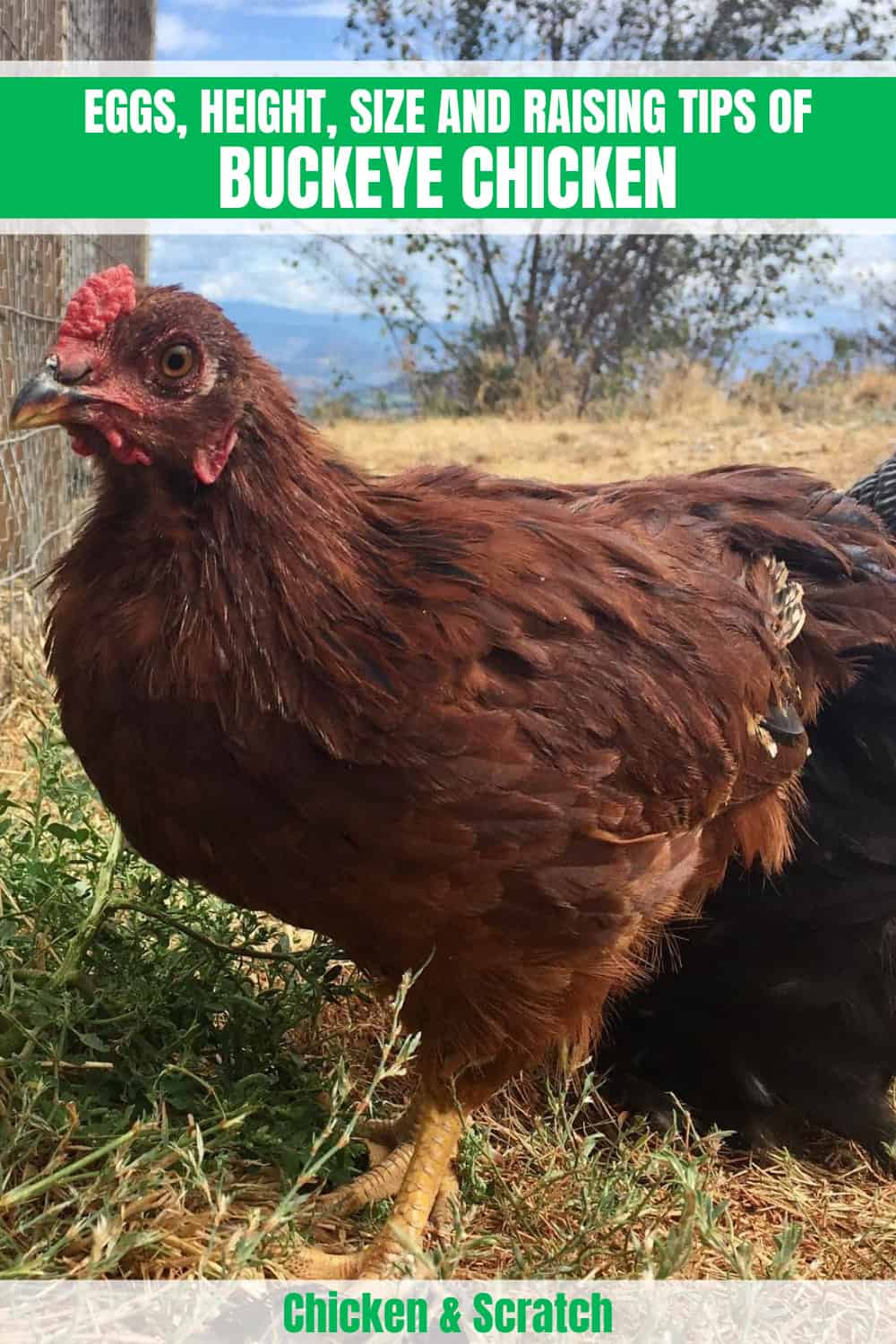This rugged yet beautiful dual-purpose chicken with unique red coloring is fast becoming a favorite of backyard chicken handlers and homesteaders. With its game bird genes, the Buckeye has good brooding, foraging, and hunting instincts. Its friendly disposition and vigorous health make it a great addition to the household flock.
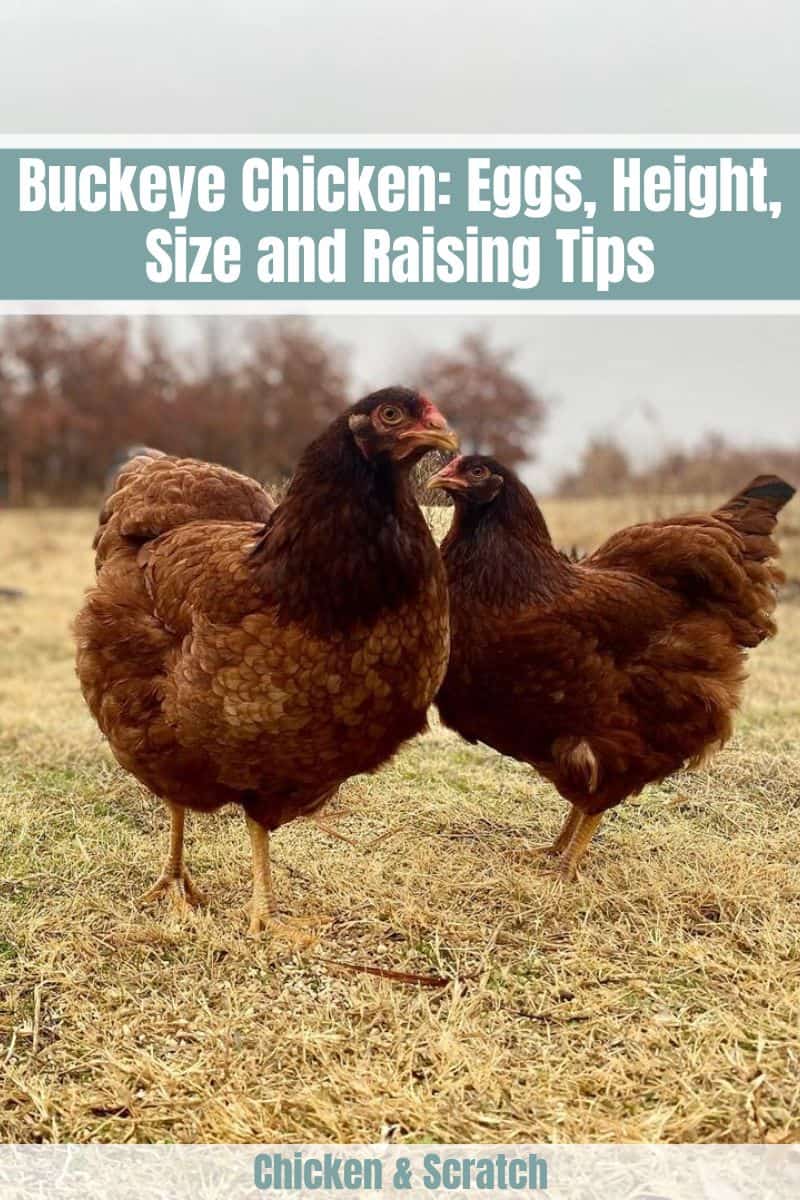
History of Buckeye Chickens
Buckeyes get their name from the Buckeye State as they were developed there by Nettie Metcalf of Warren, Ohio.
This American Class of chicken is the only breed developed entirely by a woman even though it was the women who typically had charge of the household flock in early America. Her aim was to create a breed that could produce well in the bitter Ohio winters.
Metcalf began by crossing a Buff Cochin male to Barred Plymouth Rock females, producing what she described as a large, lazy fowl. Later she crossed a Black-Breasted Red Game rooster with cochin pullets producing several red offspring and from there, the Buckeye breed was developed. Their unique color has been compared to the nut of the buckeye tree.

Originally calling her chickens Buckeye Reds, Metcalf considered changing the breed’s name to Pea Combed Rhode Island Reds due to the popularity of Rhode Island Reds. However, she ultimately decided to keep the name Buckeye.
But she found that this name limited the breed’s popularity. In 1902 she exhibited two birds in the Cleveland, Ohio Poultry Show as Buckeyes. This breed is the only breed in the American Class to sport a pea comb.
The Buckeye, along with other heritage breeds, is threatened by industrial chickens that provide a huge profit for the poultry industry. In 2005, the American Livestock Breeds Conservancy began a program to return the Buckeye to a productive backyard breed.
Today, Buckeyes are making an amazing comeback as excellent producers of both meat and eggs, and have gone from being on the brink of extinction to now having well over 5,000 birds. Dedicated breeders and backyard enthusiasts will help continue to improve their fate.
Buckeye Chicken Breed Standard and Appearance
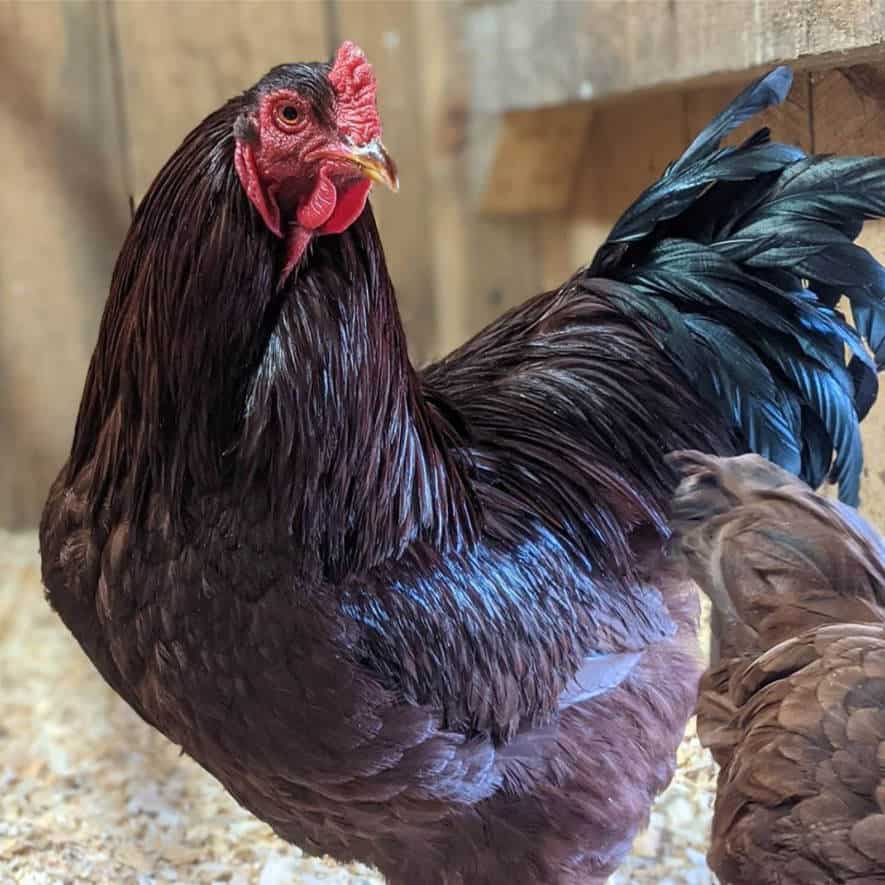
The Buckeye has a unique and robust body shape with its slanted, short broad back, thick meaty thighs, and muscular wings and breast. The uniquely beautiful mahogany-red coloring of the Buckeye is darker than that of the original Rhode Island Red.
It has a black-tipped tail and a slate bar under the fluffy back plumage which helps define the darker coloring and makes it shiny. Its game bird genetics give it tight feathering.
The round head has a red pea comb set low on the head, a short but stout yellow beak, and reddish eyes. The face, wattles, and earlobes are red. The shoulders are broad and the neck is a medium length. Viewed from the side, the Buckeye’s body is a large triangular shape.
The thighs are muscular, and the legs are yellow and without feathers. There are four toes on each foot. Roosters typically weigh around 9 pounds and hens weigh in at around 6 1/2 pounds.
The Buckeye was admitted to the APA in 1904, where it is described as American. It is similar in body shape to the Cornish, as bred in 1905, but the Cornish was not used in the breeding of Buckeyes.
Developed with the severe Ohio winters in mind, the bird’s pea comb resists frostbite. The pea comb was inherited from the game roosters that were used in developing the Buckeye breed.
Personality and Temperament
The Buckeye is generally a docile, inquisitive chicken that can be easily handled and is good for keeping around children. It generally does not bully other birds and tends to have little fear of humans, even being noted as quite friendly. Because of the game bird in the Buckeye’s genes, it has good foraging skills and thrives when allowed to free range.
The Buckeye needs a secure area in which to roam as it is not necessarily predator savvy. It does fairly well when confined as long as it has space to explore. The Buckeye is an active breed noted for being a vigilant mouser and is quite good at flying.
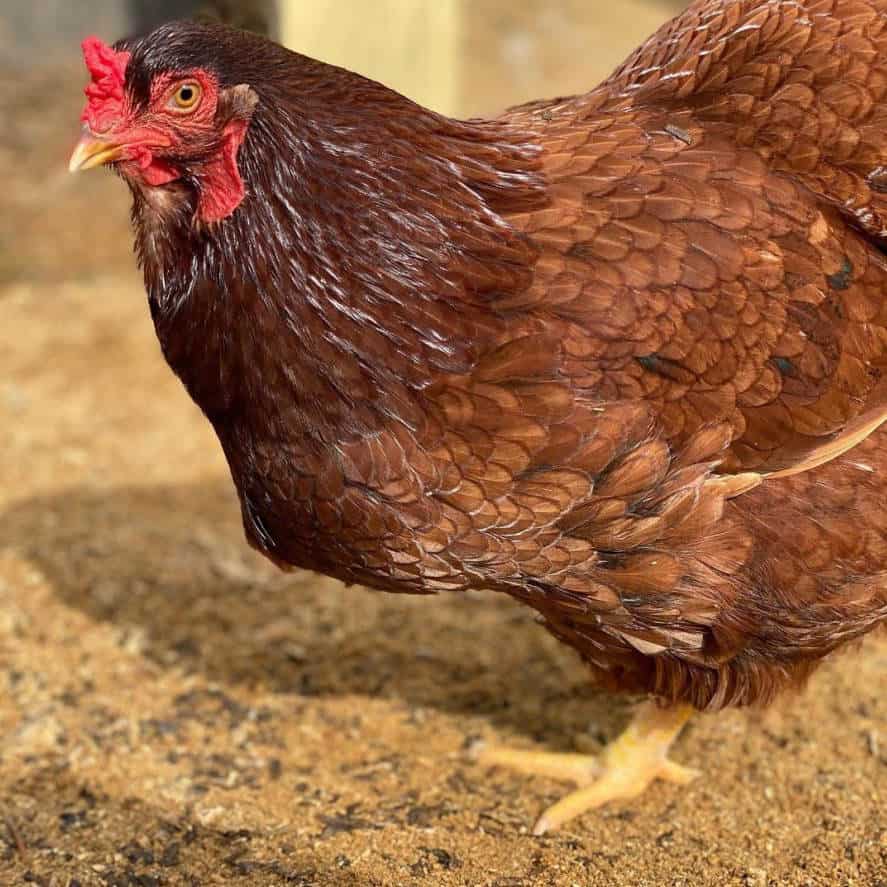
This bird gets along well with chickens of other breeds. As with any flock, new chickens should be introduced slowly in order to socialize them with the existing flock.
The rooster can be somewhat noisy, and at the beginning of the mating season, he may become territorial and slightly aggressive towards other chickens and perhaps even towards its human handlers. The male emits a full range of sounds atypical of many other chicken breeds. Hens are typically more quiet.
Buckeye Chicken Egg Laying
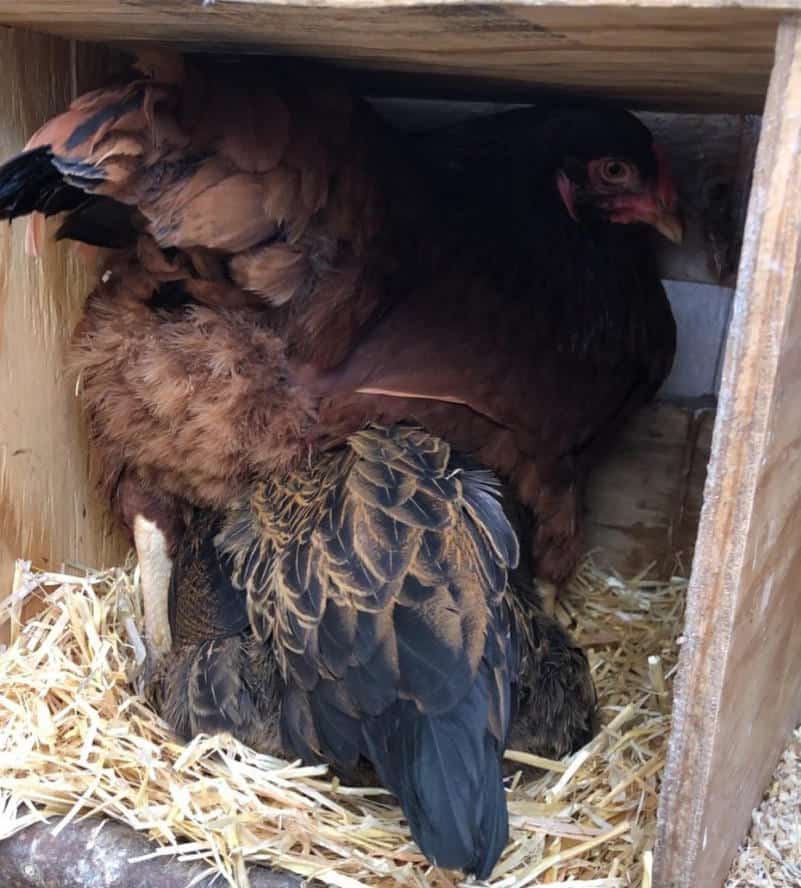
The Buckeye hen is a reliable producer of between 150-200 large brown eggs per year (which comes out to three or four per week) and she will lay well throughout the cold winter months.
Hens will occasionally go broody and raise chicks, characteristic many breeds no longer have, but one that is appreciated by those who want to maintain small, self-perpetuating flocks. The chicks are slow growers. The hens will start to lay when they are around six months of age.
A Buckeye hen will breed easily and produce fertile eggs. In general, keep the ratio of hens and roosters in the flock at one rooster for up to 10 hens. According to The Livestock Conservancy’s ALBC, egg production begins once a female chicken reaches physical maturity.
The process of egg laying begins with sunlight which stimulates the hen’s pituitary gland causes hormones to be released, which causes the chicken’s body to change. You can read more about this process by clicking the link.
Health Issues and Care

The Buckeye is a hardy and vigorous breed of chicken that can withstand extremely cold weather. The small pea comb is unlikely to get frostbitten. This bird enjoys an occasional dust bath, and because it doesn’t mind being held, regular examination for mites, lice, or other parasites is not difficult.
Checking for pests in the plumage should be done on a weekly basis to keep chickens healthy. Other than the usual parasites that afflict poultry, this breed has minimal health issues.
The Buckeye needs a well-ventilated coop with plenty of space. Four square feet per bird should be adequate. If you will be keeping your Buckeyes in a run, provide at least ten square feet per bird.
A Buckeye does tend to require a little more protein in its diet than other chickens might. Buckeye chicks can be raised on turkey starter feed, with 10% higher protein than a typical chick starter.
Many feed their adult Buckeye chickens feed made for game birds to keep the levels of protein high. High protein treats such as mealworms can also be given. Extra protein and calcium added to the diets of your laying hens will ensure high-quality eggs.
The average life span of the Buckeye is 10 years or more.
6 Tips for Raising Buckeyes

- Because the conservation status of Buckeyes is threatened, you may need an extra license to own them. Be sure to check with your local conservation department before purchasing your chickens.
- If you have neighbors close by, keep in mind that Buckeyes can be noisy, especially males. Be careful to check city ordinances for restrictions before purchasing any chickens.
- Create a comfortable space for your Buckeyes before you bring them home so that they will thrive. Be sure your coop has ample nesting boxes throughout, and provide a space for roosting or resting. The coop should be secure from predators and contain the right amount of space for the number of chickens you are planning to keep. Feeders and waterers should be readily available, of course.
- Order chicks far in advance. There is a small window of time for chicks to be in stock simply because they are live birds that need to arrive when they are a day old. Ordering early helps ensure that you get the breed you want. Be sure to purchase chicks of high quality. Chicks should be healthy and disease-free birds bought from a reputable seller. You can also purchase adult chickens, but buying chicks will be cheaper.
- If you are interested in helping to revive this breed, you can get support from clubs for breeders of Buckeye chickens. The American Buckeye Club is dedicated to preserving the Buckeye breed and a list of breeders is shared on its site.
- Contact your local county extension office or other government agency if you have questions. Such organizations sometimes provide “Chicken Workshops” for a free or low cost. Here you can get valuable information and find experts to answer any questions you may have.
Summary
Whether you’re interested in gathering tasty eggs, having a supply of fresh meat, or having a pet who is a good mouser around, the Buckeye is an ideal choice. Its friendly disposition, curious nature, and interesting heritage are just some of the advantages of raising these chickens.

Joseph Hudson has been raising chickens for over 15 years. In 2018, he completed the Agriculture & Natural Resources program at Mt. San Antonio College. He currently raises over 1400 chickens on his 7.5-hectare farm. He keeps sharing his experience on raising healthy and happy chickens on Chicken Scratch The Foundry.
